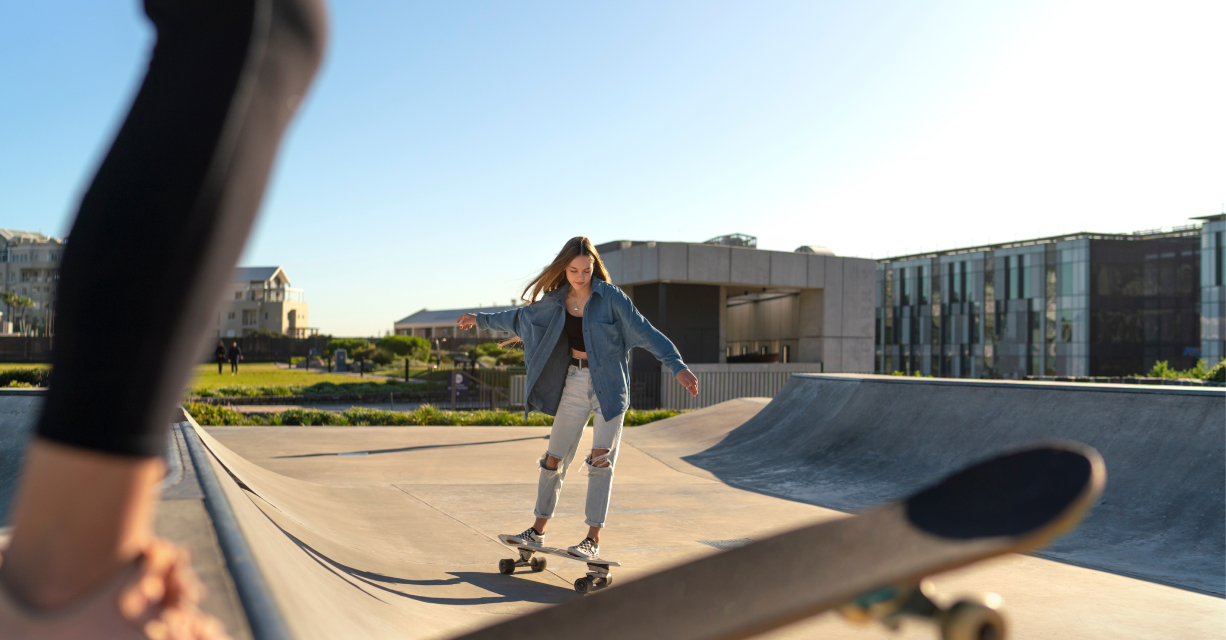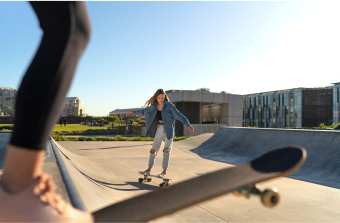

Streetwear, once rooted in the counterculture movements of the 1980s and 90s, has evolved into a dominant force in the global fashion industry. Its journey from the gritty skate parks of Southern California to the glamorous runways of Paris and Milan is a testament to its widespread influence and enduring appeal. As an experienced fashion writer with 15 years of industry insights, I delve into the fascinating evolution of streetwear and explore how it has reshaped the fashion landscape.
The origins of streetwear can be traced back to the skateboarding and surfing scenes of the late 1970s and early 1980s in Southern California. Pioneering brands like Stüssy, founded by surfer Shawn Stüssy, and Vision Street Wear catered to this subculture by offering practical, durable, and stylish clothing that resonated with the youth. These brands embraced the DIY ethos, with bold graphics and logos that became symbols of rebellion and individuality.
Skateboarders and surfers needed clothing that could withstand their active lifestyles. Baggy jeans, graphic tees, and hoodies became the uniform of choice, emphasizing comfort and functionality. This laid-back style quickly gained traction among young people seeking to express their identity outside the mainstream fashion norms.
As streetwear gained momentum, it began to intersect with another powerful cultural movement: hip-hop. The 1980s and 1990s saw the rise of hip-hop music, and with it, a distinctive fashion style that included oversized silhouettes, flashy accessories, and sportswear. Brands like Adidas, Nike, and Puma became staples in the hip-hop wardrobe, thanks in part to their endorsements by influential artists such as Run-D.M.C. and LL Cool J.
The synergy between streetwear and hip-hop culture was a natural fit. Both movements shared an anti-establishment ethos and a desire to challenge societal norms. This fusion was further cemented by brands like FUBU (For Us, By Us), which explicitly catered to the hip-hop community, offering clothing that celebrated black culture and entrepreneurship.
The 1990s marked the emergence of iconic streetwear brands that would shape the industry for decades to come. Supreme, founded by James Jebbia in 1994, epitomized the skateboarding culture of New York City. With its limited-edition drops and collaborations with artists and designers, Supreme cultivated a sense of exclusivity and hype that became a hallmark of streetwear culture.
A Bathing Ape (BAPE), founded by Nigo in Japan, brought a unique perspective to streetwear with its bold camo prints, shark hoodies, and graphic tees. BAPE’s fusion of Japanese street style with Western influences captivated a global audience and solidified its status as a streetwear powerhouse.
These brands, along with others like Off-White, Palace, and Kith, created a new fashion lexicon where streetwear was no longer just casual wear but a coveted and collectible commodity. The limited availability and strategic collaborations with high-end designers and artists elevated streetwear to a new level of cultural significance.
The 2010s marked a pivotal moment in the evolution of streetwear as it began to infiltrate the high fashion world. Luxury fashion houses, once known for their exclusivity and detachment from street culture, started to embrace streetwear aesthetics. Designers like Riccardo Tisci at Givenchy and Kim Jones at Louis Vuitton incorporated streetwear elements into their collections, blending high fashion with urban influences.
The watershed moment came in 2017 when Louis Vuitton announced its collaboration with Supreme. This unprecedented partnership between a revered luxury brand and a streetwear icon signaled the complete integration of streetwear into the fashion elite. The collection sold out almost instantly, proving that the lines between streetwear and high fashion had blurred beyond recognition.
Virgil Abloh, founder of Off-White, further exemplified this shift. Appointed as the artistic director of Louis Vuitton’s menswear in 2018, Abloh brought his streetwear sensibility to the storied brand, creating collections that resonated with a younger, more diverse audience. His work bridged the gap between street culture and luxury, redefining what high fashion could be.
The rise of social media and e-commerce platforms has played a crucial role in the proliferation of streetwear. Instagram, in particular, has become a powerful tool for brands to showcase their latest drops, collaborations, and influencer partnerships. The digital age has democratized fashion, allowing streetwear to reach a global audience and fostering a sense of community among enthusiasts.
Online platforms like Grailed and StockX have transformed the streetwear market, enabling enthusiasts to buy, sell, and trade rare and limited-edition pieces. This secondary market has further fueled the hype and exclusivity associated with streetwear, driving up the value of sought-after items.
Moreover, streetwear’s influence has expanded beyond Western markets. Cities like Tokyo, Seoul, and Shanghai have become hubs of streetwear culture, each adding their unique spin to the global movement. The cross-pollination of styles and ideas has enriched streetwear, making it a truly international phenomenon.
As streetwear continues to evolve, it faces both opportunities and challenges. Sustainability is becoming a significant concern, with consumers and brands increasingly aware of the environmental impact of fashion. Streetwear brands are beginning to explore eco-friendly materials and ethical production practices, though there is still much progress to be made.
The line between streetwear and high fashion will likely continue to blur, with collaborations and crossovers becoming more common. However, the essence of streetwear—its roots in subculture, rebellion, and self-expression—will remain its driving force. Emerging designers and brands will continue to push boundaries, innovate, and redefine what streetwear means in the years to come.
As streetwear continues to evolve, it faces both opportunities and challenges. Sustainability is becoming a significant concern, with consumers and brands increasingly aware of the environmental impact of fashion. Streetwear brands are beginning to explore eco-friendly materials and ethical production practices, though there is still much progress to be made.
The line between streetwear and high fashion will likely continue to blur, with collaborations and crossovers becoming more common. However, the essence of streetwear—its roots in subculture, rebellion, and self-expression—will remain its driving force. Emerging designers and brands will continue to push boundaries, innovate, and redefine what streetwear means in the years to come.
The evolution of streetwear from skate parks to runways is a testament to its profound impact on the fashion industry. What began as a subcultural movement has transformed into a global phenomenon, influencing the way we dress, express ourselves, and perceive fashion. As streetwear continues to shape and be shaped by cultural, technological, and social forces, its journey is far from over. The future promises exciting developments, ensuring that streetwear remains a dynamic and integral part of the fashion landscape.